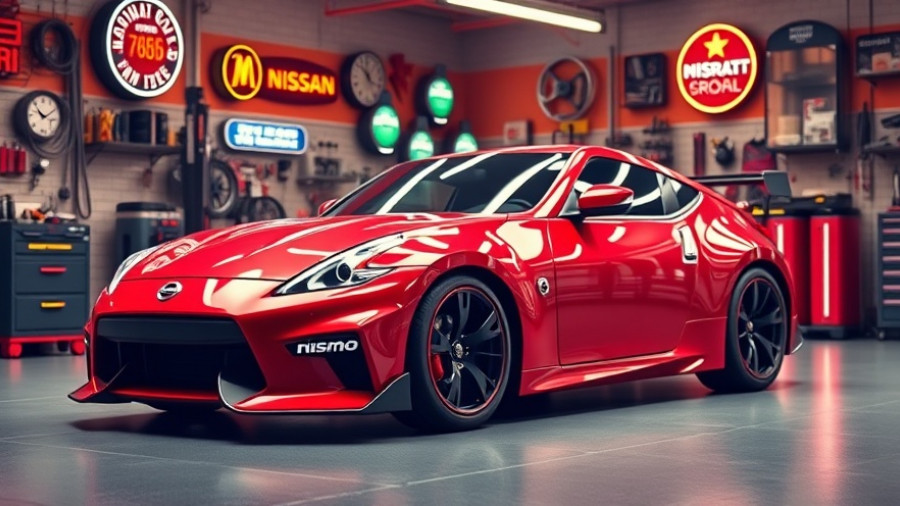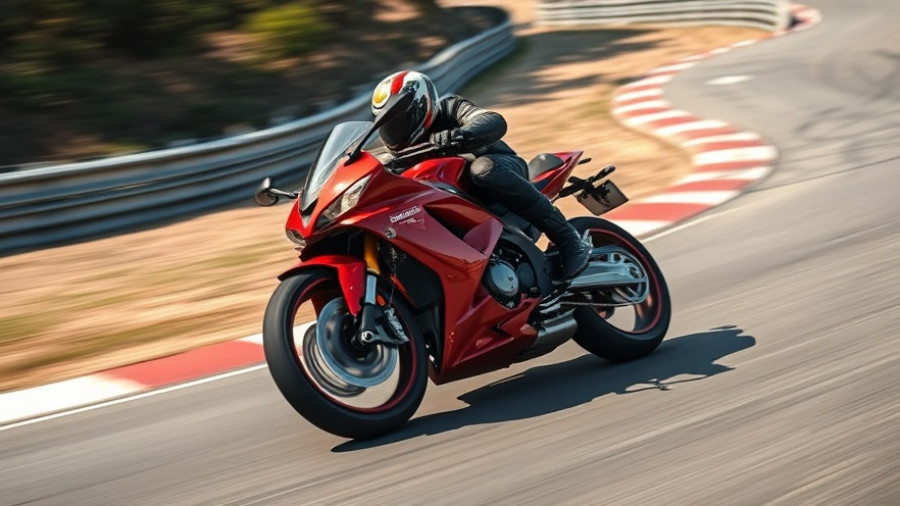
Unleashing the Power: The Forsberg Racing NISMO GT-Z
At the SEMA 2025, automotive enthusiasts witnessed the debut of the Forsberg Racing NISMO GT-Z, a reimagined version of the Nissan Z NISMO that bridges the gap between street performance and track-ready capabilities. This is not just another flashy car in a crowded exhibition hall; it is built for serious performance on the racetrack. The GT-Z capitalizes on the already impressive framework of the Nissan Z NISMO but enhances it with an array of high-performance components designed for competitive racing.
What's Under the Hood: Performance Enhancements
The modifications to the GT-Z exemplify innovation and technical prowess. Notable upgrades include adjustable upper control arms and a strut tower brace at the front, complemented by a comprehensive setup at the rear featuring adjustable camber, toe, and caster control arms. These features allow for precise tuning, enabling drivers to tailor the vehicle’s handling and performance according to their driving style and track conditions.
Running on prototype NISMO LM-RS1 wheels, wrapped in Yokohama Advan A052 tires specially sized for front and rear, the GT-Z promises excellent grip and stability. This car is about more than aesthetics; its design ensures functionality and optimizes performance during competitive scenarios.
The Heart of the Beast: Powertrain and Performance Specs
The GT-Z's powertrain enhancements resemble a 'greatest hits' album for Nissan enthusiasts, featuring components from renowned brands such as Z1. It is equipped with cold air intakes, competition brake kits, and high-performance turbochargers. These upgrades ensure that energy delivery is both efficient and potent, capable of keeping pace with the demands of competitive racing.
The stance and presence of the GT-Z, marked by its clean lines and sporty aesthetics, reflect its intention. With a NISMO cat-back exhaust providing the auditory feedback of sheer horsepower, the vehicle's capabilities excite any performance-oriented driver.
Aerodynamics: The Importance of Enhancements
APR Performance has played a significant role in enhancing the GT-Z's aerodynamics by introducing a formidable GT 250 swan neck wing and front splitter. These upgrades not only sharpen the vehicle's appearance but also provide crucial downforce. In high-speed situations, these aerodynamic components make a difference by stabilizing the car and improving cornering speeds, making the GT-Z a true contender.
Inside the Cab: Driver's Comfort and Control
Inside, the GT-Z is equally focused on performance and driver safety, featuring NISMO harnesses and Recaro carbon bucket seats for the ultimate racing ergonomics. The addition of a cool suit system ensures that drivers maintain optimal comfort, allowing them to concentrate on the track performance rather than physical discomfort during intense racing sessions.
Future Competitions: Where Will the GT-Z Compete?
The GT-Z isn’t just a concept; it is a serious competitor in the upcoming 2026 Gridlife Grand Touring Series. Forsberg Racing is committed to testing this car under rigorous conditions, and its build prioritizes elements that communicate durability and repeatable performance. These attributes will be crucial as they face off against other performance machines in the competition.
Connecting Fans: Interactive Experiences at SEMA
At the SEMA event, Nissan engaged fans not only through visual spectacle but also by incorporating elements of interactive fun, like a racing simulator. This allows attendees to experience the thrill of racing a Nissan Z, tying the excitement of the physical car to the digital realm.
Takeaway: A Template for Nissan Fans
The Forsberg Racing GT-Z represents more than just a series of aftermarket parts; it is a cohesive vehicle built to excel on the track—a rallying point for Nissan fans everywhere. By showcasing this significant build at SEMA, the brand provides an inspiring blueprint for Z owners eager to enhance their vehicles.
The considerations for stability, performance tweaking, and durability instill confidence in the potential of the GT-Z. As news of this car circulates, expect a wave of enthusiasts planning their own track-focused builds. This could spark a larger trend within the performance automotive community as manufacturers continue to innovate and push the boundaries of what's possible.
 Add Row
Add Row  Add
Add 




Write A Comment